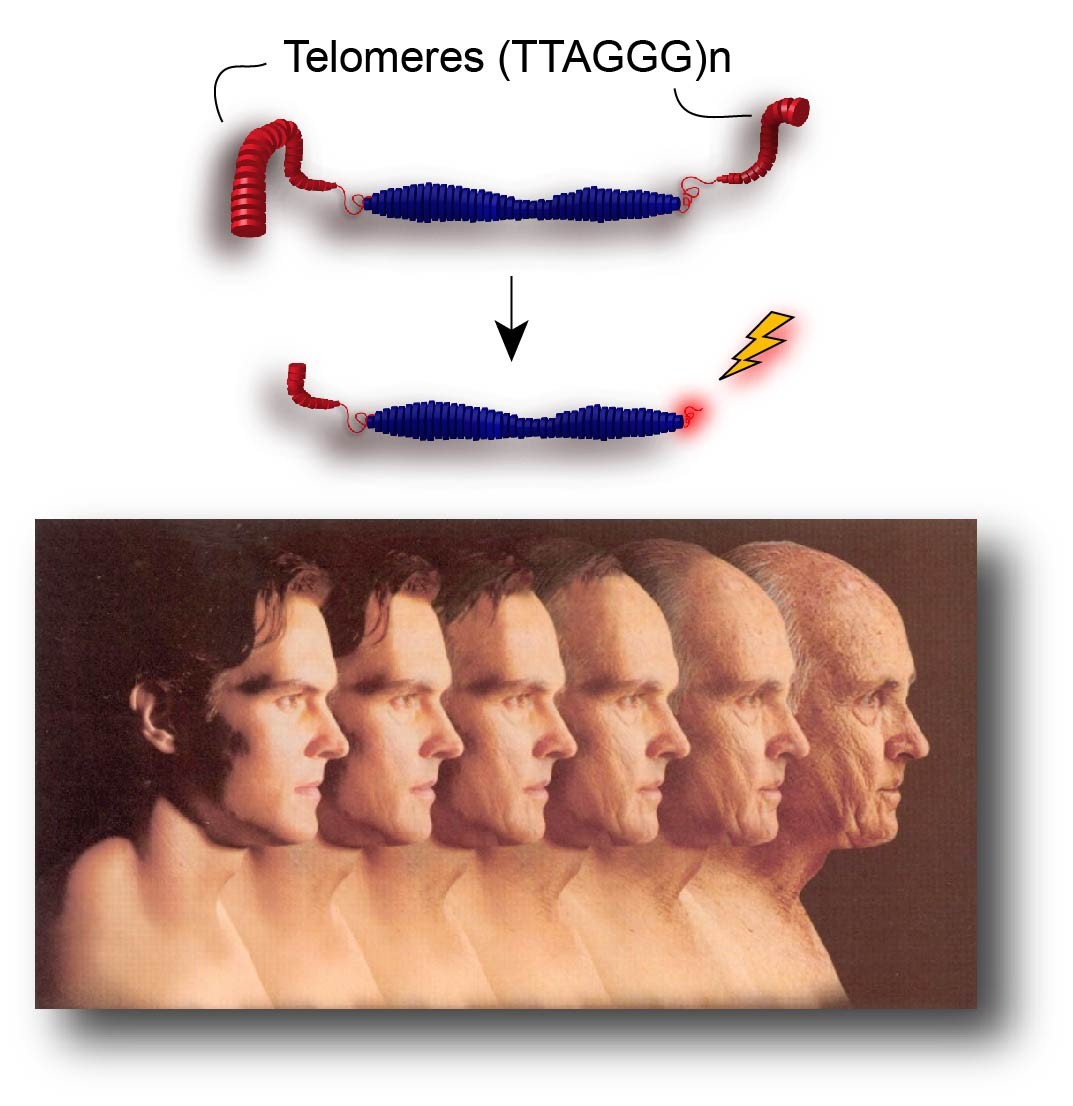Telemeres in Aging
Telomeres in Aging
 As we age, telomeres in most of our tissues progressively become shorter and therefore likely contribute to the failure of our organs and tissues observed in old age. Supporting this are data demonstrating that healthy lifespan is positively correlated with longer telomeres in humans, and patients suffering from age-related diseases and premature aging syndromes display shorter telomeres compared to healthy individuals. Furthermore, we previously demonstrated that cells with damaged and dysfunctional telomeres accumulate in some tissues of nonhuman primates, supporting the model that telomere shortening and the resulting senescence response promotes aging in mammals (Herbig et al, 2006; Jeyapalan et al, 2007; Fumagalli et al, 2012). Indeed, preventing the accumulation of senescent cells in aging mice significantly improves healthspan, demonstrating that cellular senescence, regardless of its induction, is a cause of aging associated disorders. Current work in the laboratory continues to explore to what extend telomere based senescence responses contribute to aging of long lived mammals.
As we age, telomeres in most of our tissues progressively become shorter and therefore likely contribute to the failure of our organs and tissues observed in old age. Supporting this are data demonstrating that healthy lifespan is positively correlated with longer telomeres in humans, and patients suffering from age-related diseases and premature aging syndromes display shorter telomeres compared to healthy individuals. Furthermore, we previously demonstrated that cells with damaged and dysfunctional telomeres accumulate in some tissues of nonhuman primates, supporting the model that telomere shortening and the resulting senescence response promotes aging in mammals (Herbig et al, 2006; Jeyapalan et al, 2007; Fumagalli et al, 2012). Indeed, preventing the accumulation of senescent cells in aging mice significantly improves healthspan, demonstrating that cellular senescence, regardless of its induction, is a cause of aging associated disorders. Current work in the laboratory continues to explore to what extend telomere based senescence responses contribute to aging of long lived mammals.
Potential role for telomere shortening and dysfunction in organismal aging
